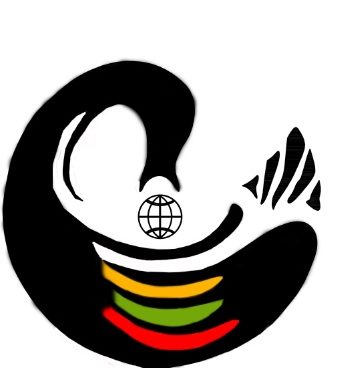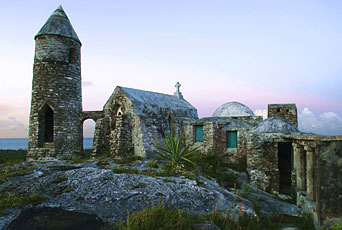The Bahamas, archipelago and country are on the northwestern edge of the West Indies. Formerly a British colony, The Bahamas became an independent country within the Commonwealth in 1973. The islands are positioned along the gateway to the Gulf of Mexico, the Caribbean Sea, and the entire Central American region. The capital, Nassau, is located on small but important New Providence Island. To the north of Cuba and Hispaniola, the archipelago comprises nearly 700 islands and cays, only about 30 of which are inhabited, and more than 2,000 low, barren rock formations. It stretches more than 500 miles (800 km) southeast-northwest between Grand Bahama Island, which has an area of 530 square miles (1,373 square km) and lies about 60 miles (100 km) off the southeastern coast of the U.S. state of Florida, and Great Inagua Island, some 50 miles (80 km) from the eastern tip of Cuba. The islands other than New Providence are known collectively as the Out (Family) Islands. They include Grand Bahama, which contains the major settlements of Freeport and West End; Andros (2,300 square miles [6,000 square km]), the largest island of The Bahamas; Abaco, or Great Abaco, (372 square miles [963 square km]); and Eleuthera (187 square miles [484 square km]), the site of one of the early attempts at colonization.
Most of the population of The Bahamas is of African descent. There is a small but significant minority of mixed European and African heritage and a similar number of descendants of English pioneer settlers and loyalist refugees from the American Revolution. English is the only language native to Bahamians, although, because of the influx of Haitian immigrants since the mid-20th century, French or the related Haitian Creole is spoken.
The Bahamas has a predominantly market economy that is heavily dependent on tourism and international financial services. The gross national product (GNP) per capita is one of the highest in the region. Nearly all of the country’s goods are imported, largely from the United States. However, the sunny climate provides ample amount of agriculture that includes; tomato, pineapple, banana, mango, guava, sapodilla (the fruit from a tropical evergreen tree), soursop, grapefruit, and sea grape. Some pigs, sheep, and cattle are raised. The small fishing industry is dominated by spiny lobster, grouper, and conch. By far the country’s most important trading partner is the United States. Other trading partners include France, the United Kingdom, Turks and Caicos, Japan, Panama, and Argentina. Major imports include machinery and transport equipment, food products, and mineral fuels. Major exports are petroleum and rock lobster.
Things to Do:
THE HERMITAGE ON MT. ALVERNIA
Mount Alvernia, also known locally as Como Hill, is the highest point in The Islands of The Bahamas at 206 feet (63 meters). It was named Mount Alvernia by Monsignor John Hawes, a Roman Catholic priest. Monsignor John Hawes, known to Cat Islanders as Father Jerome, was a skilled architect and sculptor. Using local stone, he built The Hermitage on the peak of Mt. Alvernia in 1939, a small medieval monastery where he could get away from the world. The way up the hill to the monastery is via a stone staircase on a steep rocky incline.
ALL DAY FISH FRY
Every island in The Bahamas has Fish Fry. Street vendors or beach shacks are where some of the best authentic cuisine in The Bahamas can be found. The most extravagant fish fry in The Bahamas can be found on Arawak Cay, Nassau. It is a long strip that begins with traditional sit-down restaurants and ends beachside, where beach shack barbecues serve fresh.
JUNKANOO BEATS, culinary gathering place, usually a
“Junkanoo sound is deeply ingrained in every Bahamian.” It is traditionally a street parade with music, dance, and costume of mixed African origin. A celebration that starts Christmas day and follows boxing day.
SWIMMING WITH PIGS





